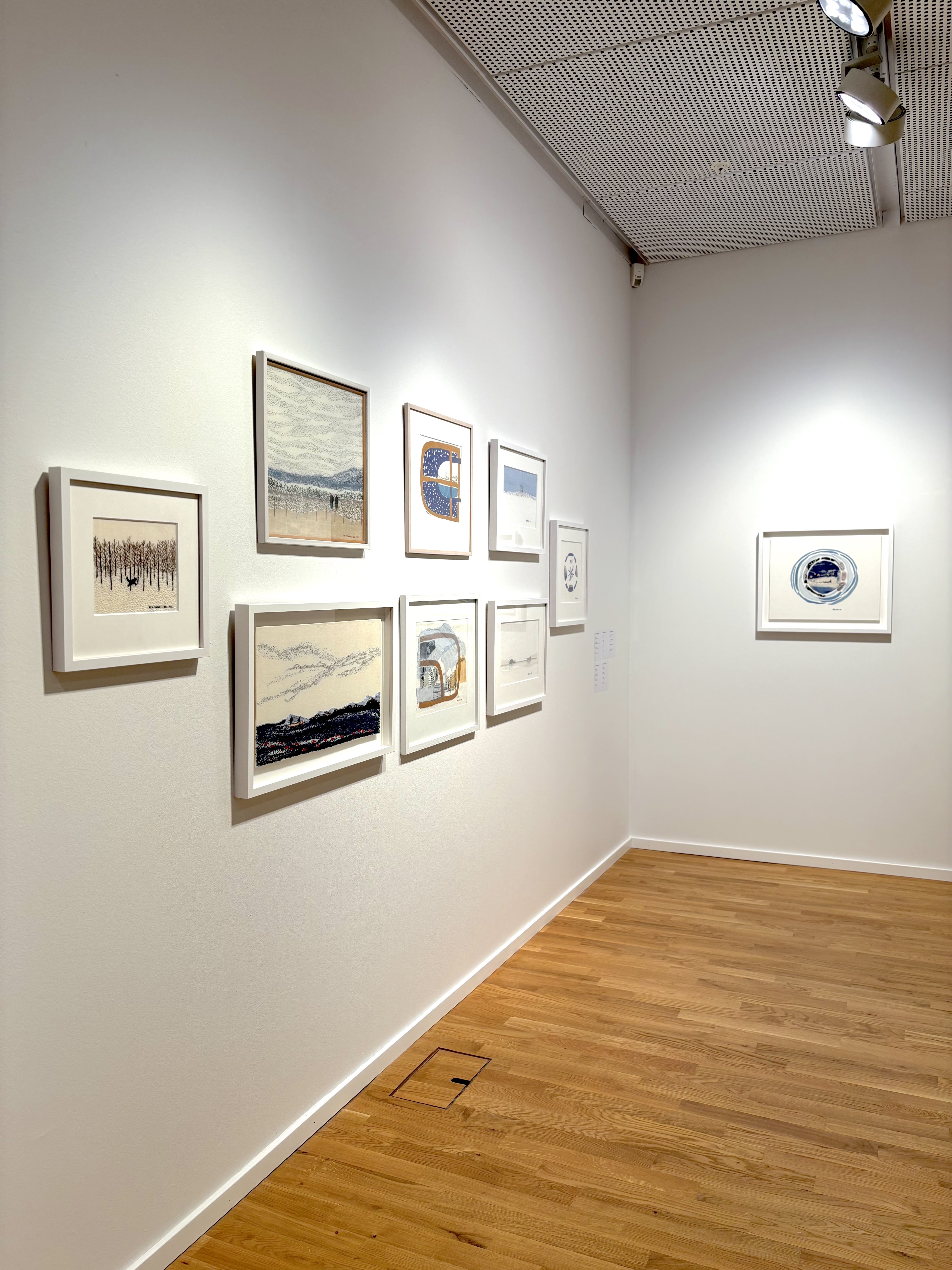Britta Marakatt-Labba at Kin
5 June 2025—11 January 2026
Exhibitions
Floor 3
Kin's collection presentation includes an exhibition of Britta Marakatt-Labba's embroidered images and a number of graphic works based on textile works in which she weaves together personal experiences of life in the north with the climate crisis affecting the whole planet. Over the course of five decades the artist has created a rich and poetic narrative about the Sámi people, the only recognised indigenous people on the European continent, and their fight for rights to land and culture.
Marakatt-Labba was born in 1951 into a reindeer herding family in Ađevuopmi/Idivuoma. She lives and works in Badje Sohppar/Övre Soppero, which, like Ađevuopmi, is located in Giron/Kiruna municipality on the Swedish side of Sápmi. She received her art education at Sunderbyn adult education school and HDK Valand in Gothenburg. Her works depict everyday Sámi life and politics as well as historical events and mythological scenes, and as in the joik, her stories often have no beginning or end. Panoramic landscapes with white mountain plateaus serve as a backdrop for detailed scenes depicted in the foreground of the pictures. She emphasises in an early interview that the nomadic and reindeer-herding Sami brought textile crafts with them during their annual migrations - even today they are easy to pack and carry.
One recurring motif is the reindeer, with or without sleds, another is figures wearing the ládjogaphir, the red horned cap worn by Sámi women mainly in the northern and Eastern regions. It was banned by the Church in the 19th century because it was considered a tool of the devil. Since the 1990s, the horned cap has enjoyed a renaissance, partly thanks to its revitalisation by Marakatt-Labba. For her, the horned cap represents strength and self-determination and is worn by the Sami goddesses. Striped fabrics, ”ranas”, appear in many images, as blankets in sleds and on beds, and on the outside of the lavvu (tipi). The outlines of the drums used by Sami shamans, appear in several works. Another motif is people doing things together, experiencing nature, travelling in reindeer sleds, discussing, negotiating and sleeping. The scenes almost always take place outdoors, in landscapes with snow, but sometimes also in urban environments, more specifically where Giron (Kiruna) and the LKAB mine are depicted. The sky plays an important role in the pictures, sometimes in the form of a cosmos that evokes something larger, existential.
Marakatt-Labba's art has been shaped by her upbringing in the midst of Sámi culture. From an early age she has been involved in duodji, Sami handicrafts, for example making traditional clothing and other types of clothing from fabric and leather. She still dyes her own fabrics and yarns, and in her later works she likes to mix embroidery, print and appliqué in the same image. Marakatt-Labba has also had extensive political involvement over the years. In addition to her involvement in the Sami artists' collective known as Mázejuavku (the Masi group), which was formed in 1979, she was active in the so-called Alta conflict. In 1980, large demonstrations were held against the development of the Àltà-Guovdageaidnu/Alta-Kautokeino waterway, which threatened to flood several communities and large reindeer grazing areas. She was also one of the founders of the Sámi Artists' Association SDS in Johkamohkki/Jokkmokk and served on its board from 1979 to 1984. In recent years she has, for example, demonstrated against oil drilling in the Arctic and taken a stand for climate justice in other ways.
One of Marakatt-Labba's most significant achievements is that she has helped to develop an infrastructure for other Sámi artists and made Sámi art accessible to a wider audience. In addition, she has taken it upon herself to protect the Sami cultural heritage, the living conditions of the Sami, culture and the art world, for example through involvement in the board of the Swedish Sami National Association and the Swedish Artists' Association. Since her international breakthrough in 2017 at Documenta 14 in Kassel and in the main exhibition at the Venice Biennale in 2022, Britta Marakatt-Labba has attracted great attention worldwide and her works are now included in a wide range of art collections. The retrospective exhibition In the Footsteps of the Stars-Britta Marakatt-Labba's Embroidered Worlds took place at Kin from October 2024 to March 2025.
